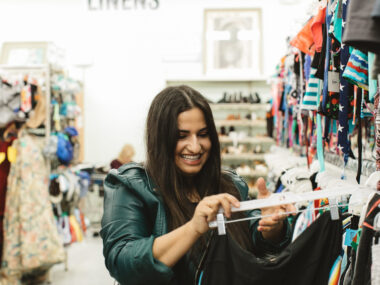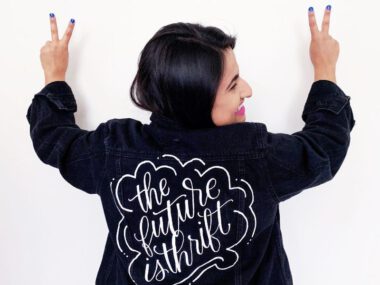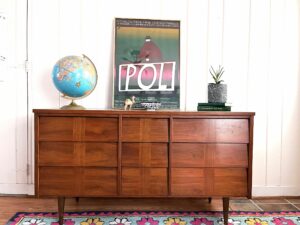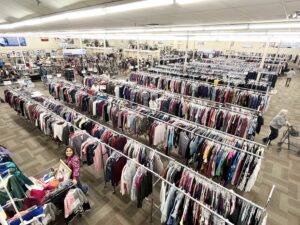When you hear ” environmental waste,” what’s the first thing that comes to mind? Did you think of the fashion industry? If so, you’re on the right track. In episode eighteen of the podcast, we break down the ways the mass production and consumption of clothing has quickly become one the leading causes of pollution in the world. The bad news: the production of fast fashion is having a deadly affect on the planet and environment. The good news: secondhand and sustainable shopping is on the rise.
What is fast fashion?
Fast fashion is defined as inexpensive clothing produced rapidly by mass-market retailers in response to the latest trends. Common and popular brands include but are not limited to: Forever 21, H&M, Shein.
The world consumes about 80 billion new pieces of clothing every year. According to The True Cost, this is 400% more than the amount we consumed just two decades ago.
This is a massive problem that doesn’t have a single solution. It’s also not going to be solved over night. However, there are some steps we can all take to reduce the amount of waste we’re producing and consuming.
Stop buying brands that contribute to the problem.
This can be a major lifestyle change for so many of us. As much as reality allows, consider making small changes and better decisions wherever you can when shopping.
Buy less, choose well, and make it last.
Think: quality over quantity. In a world of convenience, it’s easy for us to view things as replaceable. Ask yourself a series of questions before purchasing an item: do I need it? How many times will I wear it? Who made it?
Wear things as long as you possibly can
Between Instagram, Pinterest, and targeted ads, it’s easy to get tempted by the latest trends. Try making the most of what you already own by “shopping your closet.” I love to research new ways to wear things I already own. Or I’ll try styling something several different ways and then take pictures of my ideas so when I’m in a style funk, I can pull those photos up and be inspired.
Try slow fashion
Slow fashion brands use environmentally friendly materials and are produced ethically.
Organize your closet in a way that doesn’t make you want to shop more
This is a big problem for me because I separate my clothes by season so I often forget what I own. Now I put it on my calendar to pull out seasonal clothes before I buy a single thing when the season changes!
Participate in clothing swaps
Find one locally or host your own with friends and family!
Shop secondhand
As consumers, we have the power to slow down fast fashion. Shopping secondhand is an incredible way to breath new life into clothing. Secondhand shopping is having a moment right now. In fact, secondhand is projected to grow nearly 1.5x the size of fast fashion by 2028.
Build awareness
Often times, when a problem seems to big for us to solve, we pull back and avoid it entirely because we feel so overwhelmed. I’ve been there many times. One of the most important elements for change: awareness building. The more we know about the impact our consumption and production is having on the garment workers and the environment, the more we’re likely to think twice about what we’re buying and throwing away.
Think of one small thing you can do every day, every month, or even every year and start there.
Want more? Thanks, it’s Thrifted is a podcast about secondhand shopping hosted by two treasure-hunting friends, Dina & Shannon. Subscribe today. For more about the podcast visit dinasdays.com/podcast.










